Let’s talk about clouds today. Not about those fluffy white things in the sky, but rather about the powerful, stable services that allow your e-shop to grow and prosper with minimum maintenance efforts.
As you might already know, there are two types of web hosting: on-premise and cloud. In the first case scenario, you manage your eCommerce infrastructure on your own and install it on your own servers. Many enterprises choose it for security reasons; yet, it’s often harder to scale and more costly to maintain. With cloud hosting, you have your website installed on a network of virtual and physical servers far away from your premises. This service has been a major trend lately for its fast production deployment and cost-effectiveness.
As a PaaS, Magento offers three products — Magento 2 Commerce vs Open Source vs Commerce Cloud — the latest one being a cloud-based solution first released in 2016. In this article, we’ll focus on Magento Commerce Cloud features and dissect its core benefits that keep a merchant ahead of the competition.
What Is Magento Commerce Cloud?
Magento Commerce Cloud is a robust PaaS (Platform-as-a-Service) solution that brings together the unmatched features of Magento Commerce and runs on Amazon Web Services. A senior vice president of commerce at Adobe and a former CEO of Magento, Mark Lavelle, once said,
Magento Enterprise Cloud Edition is a first-of-its-kind in-market solution and a major differentiator in the broader Magento product portfolio. With this new platform running on AWS, we ensure that our merchants have the agility to respond to a rapidly changing environment, can continuously deploy innovations, easily scale to meet unexpected demand and don’t have to worry about the day-to-day management of infrastructure.
Indeed, Magento Cloud edition provides merchants with a managed services infrastructure, high security, optimized performance, smooth integration with current frameworks, and scalable web storefronts. It also came up with innovative technologies such as Fastly, Blackfire, and New Relic, which makes the deployment process much easier.
Magento Commerce Cloud supports a set of extra features that brings this edition to a new level in comparison to Magento Commerce and Open Source editions:
- Rapid Development
- Continuous Deployment
- Customizable Environment
- High Scalability
- Enhanced Security
Magento Commerce Cloud cost is based on a tiered model and ranges from $40,000 up to $300,000.
Magento Commerce Cloud Architecture
Alright, alright, cloud services are cool thanks to their advanced features and agile operations. But how do they all fit into an ecommerce architecture? Let’s take a closer look at Magento Commerce Cloud architecture at a Starter and a Pro plans.
Magento Commerce Cloud Starter plan architecture supports:
- All Magento 2 core features
- PayPal Onboarding Tool
- Business Intelligence Essentials
The Starter Plan architecture has four environments:
| The Starter Plan | |
| Integration | The Integration environment includes three testable environments. Each environment has a Git branch, database, caching, web server, services, configurations, and environment variables. |
| Staging | The Staging environment is a pre-production testing environment. This environment includes the staging active branch, services (Fastly, New Relic), database, web server, caching, configurations, and environment variables. |
| Production | The Production environment includes the active master branch, caching, third-party services, environment variables, configurations, and the webserver. |
| Inactive | Merchants have access to an unlimited number of inactive branches. |
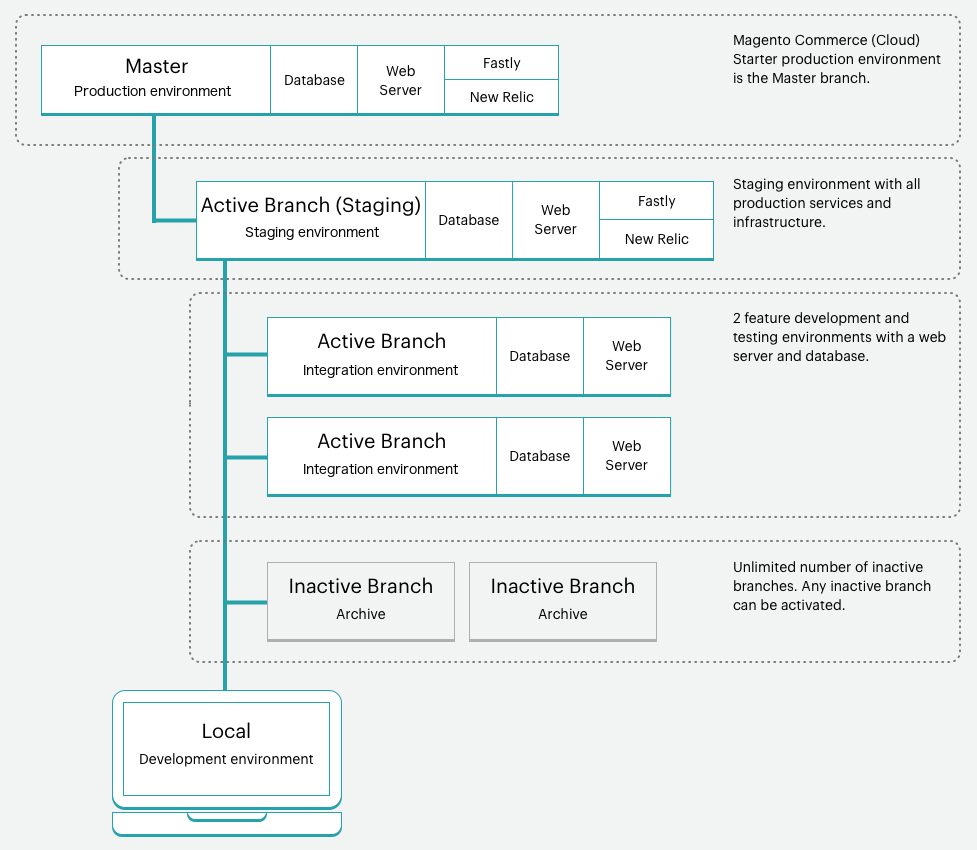
Magento Commerce Cloud Pro plan architecture supports:
- All Magento 2 core features
- PayPal Onboarding Tool
- Business Intelligence Pro
- B2B module
The Pro Plan Architecture has three environments:
| The Pro Plan | |
| Integration | The Integration includes a web server, environment variables, database, caching, configurations, and some services. Inactive — Merchants have an unlimited number of inactive branches based on the Integration environment. |
| Staging | The Staging environment is a pre-production testing environment. This environment includes services (Fastly, New Relic), database, web server, caching, configurations, and environment variables. |
| Production | The production supports a three-node, advanced architecture for your data, environment variables, caching, configurations, and third-party services. |
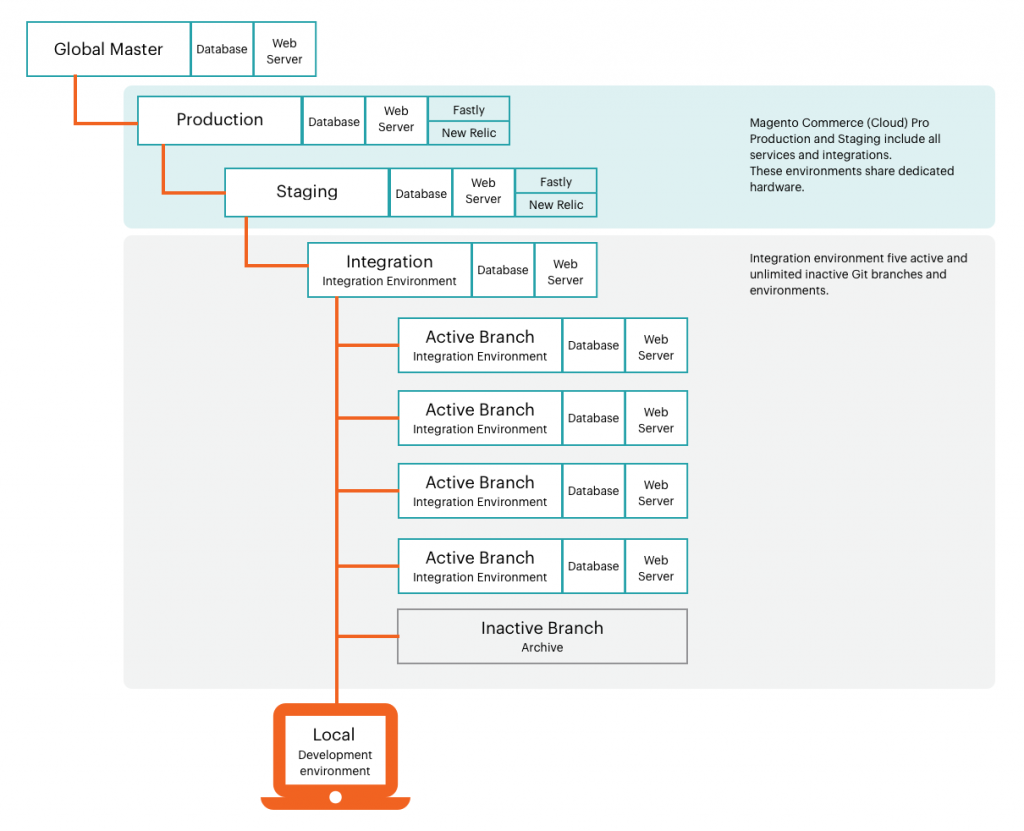
Choose your Magento Commerce Cloud plan and get your website designed by Magento professionals.
Upgrade to Magento Commerce CloudMagento Commerce Cloud Features
Magento Cloud provides advanced functionalities you can apply to complex ecommerce strategies. Here are a few Magento Commerce Cloud features out-of-the-box.
Ece-Tool Package
Magento introduced an ece-tools package to provide a scalable deployment tool tailored to the merchant’s requirements. The ece-tools package is a set of scripts and tools aimed to simplify various processes, such as cron management, docker deploy environment, and project verification.
It includes scripts and commands that give merchants the possibility to automatically deploy the ecommerce projects. With the ece-tools package, you can manage the backup of the database, apply custom patches, and verify environment configuration.
Hosted on the Cloud
Cloud nature of the Magento edition allows for fast scalability and stable performance no matter the sales season. Magento Commerce Cloud runs on AWS (or Microsoft Azure for Pro projects) and is hosted by a dedicated team of developers who can guarantee your ecommerce store is operating with maximum efficiency. Magento is aware of the massive traffic spikes that can influence online stores and can easily handle all the occurring problems.
Rich Administrative Suite
Magento Commerce Cloud enriches the administrative suite of Magento Commerce that enables you to smoothly handle complicated projects. Here are some Magento Cloud features:
- B2B (business-to-business) module comprises the following tools: quoting, company accounts, quick checkout options, credit lines, customer-specific payment options, requisition lists, quick order, customer-specific pricing and catalogs, purchasing limits, and more.
- Page Builder allows users to create unique pages abound their products and manage content more efficiently.
- ElasticSearch helps to customize search results throughout a Magento store and manage search requests through large catalogs in multiple languages.
- Customer segmentation gives the possibility to differentiate customers and offer cross-sells/up-sells based on a customer address, browsing history, shopping cart contents.
- Content Staging allows a merchant to schedule modifications to CMS Pages or Blocks before going live.
- Instant Purchase function saves a customer’s shipping and payment information in order to accelerate the checkout process next time they shop at your store.
- Visual Merchandiser visually organizes your categories’ products by such parameters as best-selling items, colors, size, discounted products, and more.
Magento Cloud Core Benefits
Why would you choose Magento Commerce Cloud over other platform editions? Think of Magento Commerce Cloud as of five functional layers, each bringing multiple advantages to your store.
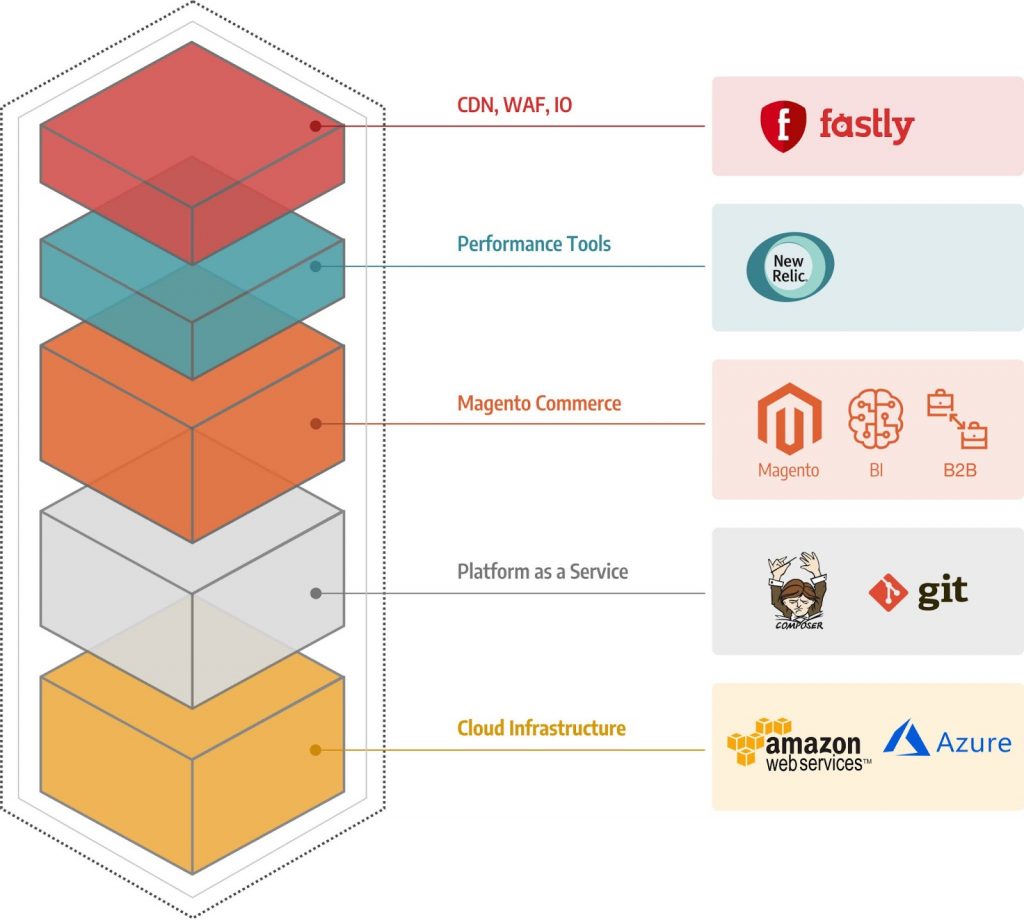
- Amazon Web Services and/or Microsoft Azure power the underlying architecture with the cloud hosting.
- Git and Composer allow for easy deployment of a PaaS solution.
- Magento, Business Intelligence, and a B2B module facilitate commerce operations and present accurate analysis and reporting of the store.
- New Relic for application performance management (APM) collects, views, and analyzes data to optimize interactions between the project applications.
- Fastly provides a Content Delivery Network (CDN), security features, and image optimization tools.
No matter whether you’re building a large enterprise website or implementing Magento migration, these technologies are already included in Magento Commerce Cloud license fees and bring in the following advantages.
Seamless and Fast Production Deployment
Initially, adding projects on Magento Cloud was quite complicated as developers needed to use three separate git repositories to handle the integration, staging, and production environments.
After deploying in the integration environment, the development team needed to move to a separate production repository, which could make the installation process fall apart. Moreover, settings for the staging and production environments were adjusted manually, which stole time both from developers and a merchant.
In 2017, Magento introduced two crucial enhancements to make Magento Cloud deployment faster and easier.
- Magento launched a staging/production git repository through the Cloud UI and merged all environments into a single Git tree, making the code merging in the deployment process much easier.
- Magento also provided self-serve configuration and management of staging/production.
Page Speed Enhancements
Uploading high-quality photos and videos of your product is a double-edged sword for a merchant. On the one hand, they increase ecommerce conversion rates and retain customers. On the other, they often cause slow loading time. To address the matter, Magento introduced Image Optimization technology powered by Fastly exclusively for Magento Commerce Cloud. With Fastly Image Optimization, merchants can transform and optimize images without affecting the origin server and quality of the photos.
High Scalability and Easy Customization
Magento Commerce Cloud takes care of scaling your ecommerce store to manage huge website traffic. Just like its older brothers Magento Commerce and Open Source, Magento Commerce Cloud is an open-source platform whose code can be easily customized to your likings. Yet, it comes with advanced scalability features such as order archiving, multiple master servers, scalable backend product management, and MySQL customer support.
Enhanced Security
You can follow the best Magento security practices alone or let the platform provider do it for you. Magento Commerce Cloud boasts advanced security features that take operational responsibilities off the merchant’s shoulders. Extra protection layer of Web Application Firewall (WAF) ensures your store is PCI compliant and deters malware inputs, injection attacks, cross-site scripting, and other OWASP Top Ten security threats.
Boost in Performance and Increase in Available Memory
Previously, Magento used the С3 family of servers, which was a good technology at the time but is outdated today. In 2018, Magento moved from the C3 to the M4 family and shifted smoothly all the existing clients to a new family of servers. This change to M4 cloud servers has offered Magento merchants a 100% growth in the memory storage and, thus, the unlimited possibility to scale and expand a product catalog without affecting store’s performance.
Moreover, the Magento team also performed optimization of some other features such as MySQL buffers, REDIS Cache, and ElasticSearch, which brought in additional performance enhancements.
Total Cost of Ownership
Many small companies consider that the Open Source solution provides the lower total cost of ownership (TCO). Selecting an Open Source Edition is a good option if you want to exclude software and subscription fees.
However, keep in mind that TCO is a lot more than just the price of your software. It’s also development, hosting, design, maintenance, support, security patches, third party and custom extensions, and more. For the most part, Open Source is more expensive than a Commerce Cloud with advanced functionalities.
This is particularly evident when making comparisons between Magento Open Source and Magento Commerce Cloud. With Magento Cloud, you can eliminate the support cost and reduce development costs.
Read our article to find out more about the Commerce Cloud’s total cost of ownership.
Fast Time to Market
Fast time to market is one more advantage offered by Commerce Cloud. With Magento Commerce Cloud, you can run marketing faster with automatic deployments. Cloud solution introduces the quickest way of maintaining a fully-operational ecommerce store in six-month deployment time.
Magento Commerce Cloud vs BigCommerce
Magento Commerce Cloud is run on AWS, whereas BigCommerce is operated on Google Cloud. In comparison to Magento, the level of customization is restricted in BigCommerce. With the introduction of such technologies as Fastly, Commerce Cloud Edition got a higher level of data security, to compare it with basic security patches of BigCommerce.
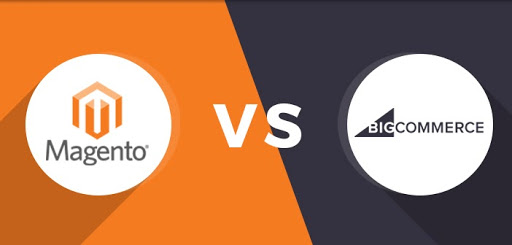
Thus, flexible customization along with advanced security makes the Magento Commerce Cloud a better platform for enterprise-level companies.
| Features | Magento | Big Commerce |
| Cloud-based architecture | Amazon Web Service | Google Cloud |
| Security | Advanced Security | Less Secure |
| Bulk Data Transfer | Supported | Not Supported |
| Degree of Control | Unlimited | Limited |
| Multiple Storefronts | Supported | Supported |
Magento Commerce Cloud vs Salesforce Commerce Cloud
Magento Cloud serves both B2B and B2C businesses with its highly customizable solution and provides a great range of tools and features. Salesforce Commerce Cloud is a SaaS-based, fully managed multi-tenant platform.
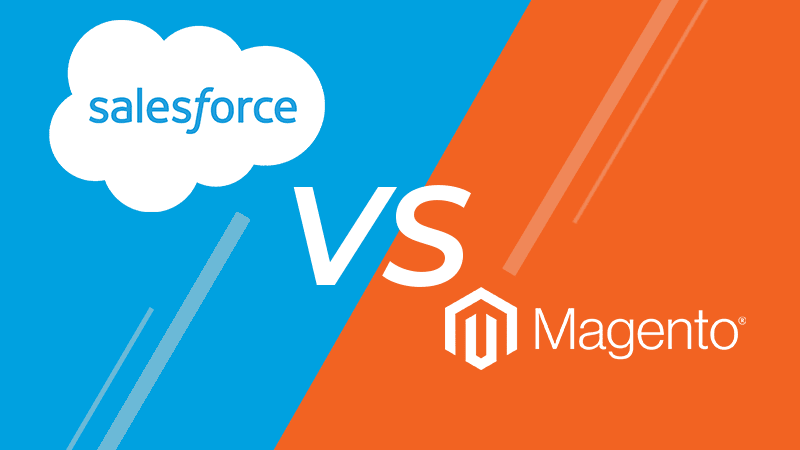
| Features | Magento | Salesforce |
| Cloud-based architecture | Amazon Web Service | Proprietary, Multi-Tenant |
| Security | Advanced Security | Good Security |
| Bulk Data Transfer | Supported | Not Supported |
| Degree of Control | Unlimited (full source code access) | Limited (no access to the shared core) |
| Multiple Storefronts | Supported | Supported |
Check out our article to get a full comparison between Magento vs Salesforce.
Magento Commerce Cloud vs Shopify Plus
Shopify Plus is a cloud-based platform that takes care of operating your servers, optimizing it for performance and security patches. However, a disadvantage of Shopify Plus is that you do not have access to the code, meaning less flexibility in customization.
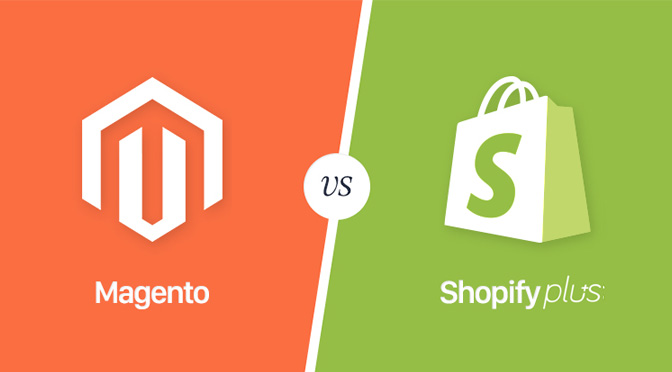
| Features | Magento | Shopify |
| Cloud-based architecture | Amazon Web Service | Proprietary |
| Security | Advanced Security | Good Security |
| Bulk Data Transfer | Supported | Supported |
| Degree of Control | Unlimited (full source code access) | Limited (no access to the shared core) |
| Multiple Storefronts | Supported | Supported |
If you want to find which ecommerce platform is right for your retail business, check out our Magento vs Shopify comparison in detail.
Why Should You Choose Magento Commerce Cloud?
Magento Commerce Cloud provides a great variety of inclusive features tailored to specific ecommerce business requirements. You should opt for Magento Cloud Edition if you:
- are already running an enterprise-size business and plan to scale further;
- seek a fast deployment solution and easy, intuitive content management system;
- require advanced security features for your store and don’t want to worry about your website or server performance;
- wish to follow the latest marketing trends, innovate, and present your customers with an omnichannel shopping experience;
- strive to get a clear picture of your sales, customer behavior, and web performance based on powerful and detailed analytics tools.
All the aforementioned Magento Cloud features make ecommerce development and management a real piece of cake. As a certified Magento Solution Partner, our agency can help you to deliver an omnichannel retail experience and integrate all business processes into a powerful Magento solution.
It is true that Magento Commerce Cloud may seem a bit pricey in comparison with other Magento editions. Yet, you would save a lot on the associated website costs, like ecommerce hosting or marketing, since many functionalities and features are already included in the license fee.



